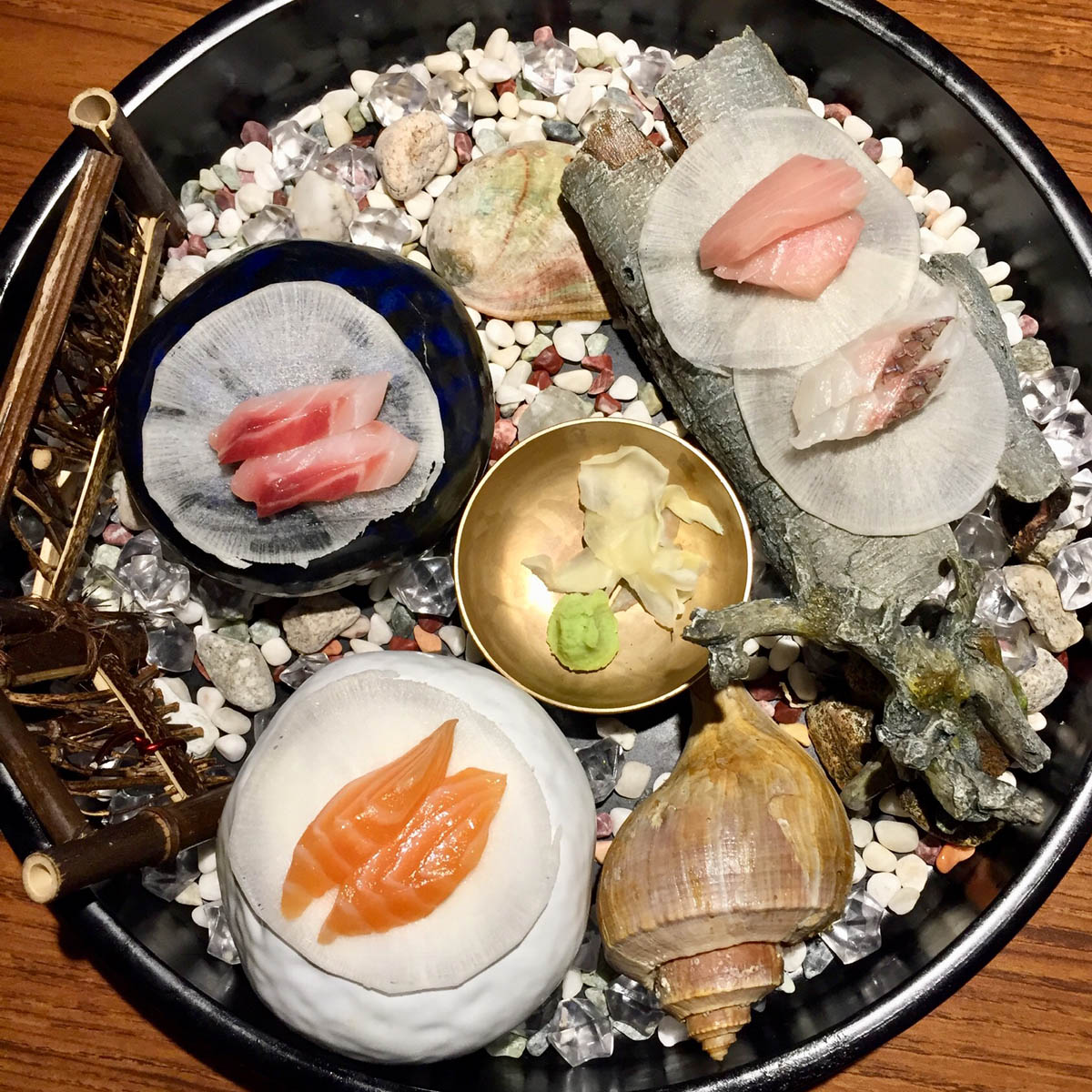
The new restaurant near Knott’s Berry Farm is more than just a Korean barbecue; Kyung Bok Kung is one of the few places (if not the only one) in the county to offer han-jeongsik, a blowout feast originally designed for royalty in imperial Korea.
The Korean analog to Japanese kaiseki, han-jeongsik translates to “a complete Korean meal.” But even this definition is an understatement, as han-jeongsik represents the pinnacle of Korean dining, and in Korea, there are tales of traditional banquets comprising a hundred different dishes served all at once.
At Kyung Bok Kung, you get about 15, which is plenty. The restaurant—the first U.S. location of the South Korean brand—charges $55 per person for the “special” han-jeongsik and $75 for the “premium,” and there’s a two-order minimum for either option. This means that before you commit, you need at least one other willing participant to do it with you.
The differences between the two tiers of han-jeongsik are slight. Right now, the cheaper dinner culminates with marinated short rib served atop a sizzling skillet. The more expensive han-jeongsik features the short ribs braised and served with abalone. But as these meals are apt to change with what’s seasonally available, it can be hard to notice an uptick in quantity or quality with the “premium” experience.
From what I observed, both started the same way, with a bowl of water kimchi that jolted my mouth awake and a bowl of warm porridge that calmed it back down. Sipping the water kimchi broth was equivalent to chugging a bowl of cold pickle juice—it’s the ultimate palate cleanser. After that, there was a salad featuring a hollowed-out tomato filled with bay shrimp and shredded cheese.
The next few courses were served simultaneously and without warning. This was to be expected: Korean han-jeongsik is supposed to overwhelm you with a table of food stretching to the horizon. There’s no such thing as pacing here. Also, at Kyung Bok Kung, there was no expense spared on presentation; the plating on some dishes was nothing short of art.
The surgically cut sashimi was displayed atop an arrangement of stone and pebbles rivaling an Isamu Noguchi rock garden. And the tiny portions of veggies and meat in the Royal Nine Delicacies were placed inside the partitions of a bronze container so heavy it could deflect bullets. It was ironic that this build-your-own taco set-up centered on delicate buckwheat crepes that tore as if they were wet tissue.
In stark contrast, the Korean-style beef tartare was done in a minimalist style. The small, cylindrically molded strips of raw beef came on a piece of slate smeared with puréed avocado. The meat was clean and brisk, the mouthfeel the same as the sashimi I had minutes before.

And then there was the sesame soup, which arrived resembling chowder. Despite tasting chalky, it contained petals of rice cake that chewed as though they were al dente pasta. It was at this point that I began to feel the weight of all that I had eaten. I began to pace myself on the three kinds of Korean pancakes—a meaty one wrapped in sesame leaf, a lotus root and a standard kimchi-jeon. Meanwhile, the server brought some “white kimchi”: bite-sized bundles of unspiced, fermented Napa cabbage that functioned as another palate cleanser.
Next, it was time for the main event: a Sterno-heated cast-iron skillet of beef short rib morsels that were glazed so completely in a sweet marinade it verged on candy. I only realized it was merely the midpoint of the meal when my server brought out a whole fried fish slathered in a sticky soy sauce that he proceeded to debone at the table. As he did so, he said there were two more courses still coming: a chewy octopus stir-fry with gochujang sauce and a boiled clam soup with cubes of tofu. And, of course, there were bowls of rice to eat them with.
Since I was already past full, I could only manage to take a bite of the octopus dish and a spoonful of the soup. I didn’t touch the rice.
Sheepishly, I asked the server to confirm there was nothing else coming. “No,” he replied, “but we do have a dessert tea for you.”
As I sipped the tea and surveyed all the uneaten han-jeongsik food for which I didn’t have room, I imagined members of the Korean imperial court having the same enviable problem 600 years ago. How appropriate that I would have this experience in a restaurant named after the main royal palace of the Joseon dynasty. But sitting there overfed and immobile in a space so elegantly austere it resembled a Medieval throne room, I didn’t feel so much like Korean royalty as I did Henry VIII.
Kyung Bok Kung, 7801 Beach Blvd., Buena Park, (714) 888-4948; kyungbokkungusa.com. Open Mon.-Sat., 11:30 a.m.-3 p.m. & 5:30-10:30 p.m.; Sun., noon-3 p.m. & 5-10 p.m. Special han-jeongsik, $55 per person; premium han-jeongsik, $75 per person. Full bar.
Before becoming an award-winning restaurant critic for OC Weekly in 2007, Edwin Goei went by the alias “elmomonster” on his blog Monster Munching, in which he once wrote a whole review in haiku.

